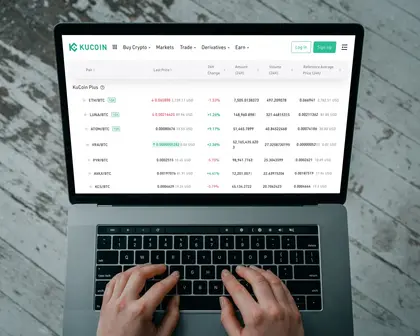Bonds: Reboot of the bond market
The secondary bond market will resume normal trading today. It had been suspended since 24 February, the beginning of the full-scale Russian invasion of Ukraine.
Last Thursday, the National Securities and Stock Market Commission (NSSMC) decided to remove most restrictions on transactions in the capital markets and the organized commodity markets. Therefore, starting today, all issues of domestic bonds resumed trading, not only military bills.
Last Tuesday, the Ministry of Finance sold UAH3.1bn (US$85m) of 14-month bills at 16%, which was quite a significant amount for the current environment (see auction overview). A similar amount was immediately settled in the secondary market, thus increasing activity sevenfold from a week before to UAH3.6bn (US$98m).
ICU view: The restart of trading in all domestic bonds has long been expected by market participants. Such a decision will significantly expand the investable bond universe for funds and individuals. Yields are likely to be more attractive than those in the primary market.
The NSSMC’s decision will allow the market to gradually build a yield curve that reflects a fair level of compensation for the risk of investing in Ukrainian local-currency sovereign debt. This new yield curve will also serve as a benchmark for the cost of borrowing in primary auctions. Therefore, it will be increasingly difficult for the Ministry of Finance to ignore the signals from the secondary market. Consequently, we expect further growth of coupons on primary placements.
Currently, the Ministry of Finance plans to offer the same UAH bills tomorrow as in the previous two weeks. Still, now there are expectations that the Ministry can further revise the terms of military bills and compete with the secondary market for investors’ funds.
Bonds: Eurobond market waiting for investors’ decision
This Wednesday, August 10, the results of the consent solicitation for the restructuring of Ukraine’s sovereign Eurobonds as well as state-guaranteed Eurobonds of Ukravtodor and Ukrenergo should be announced.
Negotiations between the issuers and investors continued last week, and the deadline for making decisions is tomorrow. Voting takes place simultaneously for each issue of Eurobonds separately and for all issues together. The proposal will be supported if consent is received from holders of at least 66⅔% of the aggregate principal amount of all the securities outstanding and more than 50% of each series. Last week, the bondholders were submitting votes. Consequently, trading activity was minimal, and prices slid slightly from 20-34 cents to 18-32 cents per dollar. Only the price of VRIs did not change, and remained at 27 cents per dollar of notional value.
ICU view: The Ukrainian Eurobond market continued to be held in suspense waiting for investors’ decision on the restructuring terms, which weighed on both prices and activity. The decrease in prices may be due to selling by those investors who are not ready to accept the restructuring terms and, thus, sold Eurobonds to reduce their exposure to Ukraine risk.
FX: FX market stabilizing
The FX market is gradually stabilizing in all segments, and the hryvnia exchange rate on the cash market has strengthened to less than UAH40/US$.
On the non-cash official FX market, the turnover between bank clients has largely stabilized. However, two weeks after the one-time devaluation of the hryvnia, imbalances appeared again in the FX market. Demand for hard currency significantly exceeded supply, and the NBU had to sell US$490m last week.
Meanwhile, on the retail market, the extra demand that arose at the end of July after the hryvnia weakened started to subside, and the hryvnia gradually strengthened with minor fluctuations.
Thus, the average USD/UAH exchange rate for the 10 largest issuers of payment cards almost did not change, staying at UAH36.8‒37.3/US$, and on the cash market, these banks strengthened the hryvnia from UAH38.95‒40.20/US$ to UAH38.12‒39.29/US$.
ICU view: The fact that the FX interbank market is back to deficit is totally expected, in our view. The imbalances will likely persist in the future, so the NBU will have to maintain its FX sale interventions. The imbalances in the cash market decreased as the hyped demand started to ease and some deferred supply came into play. The NBU’s decision to allow individuals to purchase hard currency in banks—providing it is immediately placed on deposit—also positively contributed to easing pressures. We expect the FX market to be relatively calm with small fluctuations near the current levels of the UAH exchange rate.
Economics: NBU reserves stabilize in July
The NBU gross international reserves inched down 1.8% in July to US$22.4bn. Meanwhile, the NBU reserve and interventions stats become tricky to interpret.
After three months of rapid decline, NBU reserves meltdown decelerated notably in July. The central bank said it sold net US$1.2bn over the month to cover the deficit in the interbank FX market, a substantial decline from US$4.0bn in June. The reserves were replenished with US$1.05bn of financial assistance from Germany while net redemptions of local FX-denominated debt stood at US$0.2bn.
ICU view: At first glance, July numbers look encouraging as they indicate the one-step devaluation of hryvnia in late July had a quick positive effect on the interbank FX market. However, NBU reserves statistics are becoming tricky to interpret as it appears that the government channels a part of international financial assistance to its accounts outside of the NBU—likely at Ukreximbank. The government received US$1.3bn grants from the US in June and US$1.7bn in July, but the NBU didn’t mention that those grants landed in its reserves. At the same time, we observe a substantial increase in FX holdings by Ukreximbank over the same period. Our conclusion is that (for a reason we have not determined yet) a part of FX inflows to Ukraine bypasses the accounts of the NBU. This means that the Ukrainian authorities, in fact, hold more FX liquidity than it appears from the NBU reserve statistics. We estimate the true end-July FX liquidity position is US$1.0‒1.2bn above what the NBU showed as its reserve holdings as of end-July. Also, we hypothesize that the government could have sold a part of its holdings at Ukreximbank in the market and, thus, the reported NBU interventions were substantially distorted by such government transactions. The fact that the NBU reserves and FX market interventions data become much less reliable is a negative development.
Overall, we expect that the NBU will have to keep selling FX in the market to cover the shortage, but in smaller volumes than before the hryvnia devaluation. At the same time, we believe NBU reserves should remain largely.
RESEARCH TEAM: Vitaliy Vavryshchuk, Alexander Martynenko, Taras Kotovych
See full report here.
You can also highlight the text and press Ctrl + Enter






Comments (0)